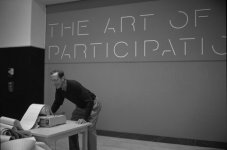One reason to shoot chromes, that hasn't been mentioned, is the workflow. Once you press the shutter, you're basically done. All you need to do is to have the film developed and mounted and then project them or look at them through a viewer. You can even have them scanned for you. There's no need for a darkroom, wet or dry.
While you can have someone else develop and print negatives or print your digital photos, you do lose control. With negative film or digital capture, you need to process yourself to maintain control of the outcome. With slides, all decisions about how the finished product will come out can be made in the camera and it doesn't matter if you have the processing done (as long as you have a competent developer) or do it yourself .
I'm one who thinks that we are all very fortunate to live in a time where there are so many options. I enjoy using my digital equipment as well as my film equipment. Workflow is one area where I really appreciate slide film. I'm not a very technical guy and spending hours in front of a computer is not what I consider fun. I was reading an article on Tom Hogan's website where he was suggesting buying several RAW converters, so you can run your images through each to see which one you like the best. One would really need to like working on a computer a lot to go that route.
The cost is a relative thing. A roll of Provia 100 and a Fuji slide mailer costs $11.24 plus shipping from Adorama as of today. Add 82 cents postage to send in the mailer and you're up to around $12.25 per roll if you buy several rolls and mailers at the same time. If you averaged a roll of film per week, your cost per year would be $637. Other forms of photography have costs as well and I wouldn't say that slide photography is the cheapest, but it wouldn't be difficult to spend a similar amount regardless of the type of photography you use.




